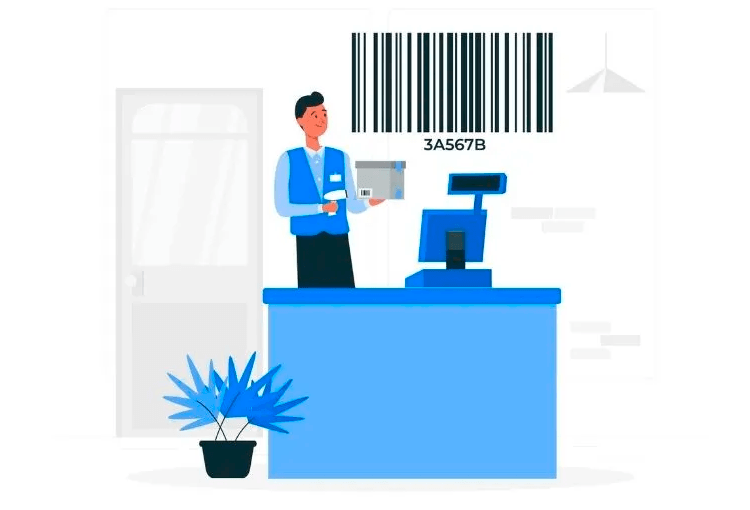If you have an online store or are thinking of opening one, you have probably heard the term SKU. However, do you know exactly what it means? SKUs in Virtual Stores and E-commerce are a fundamental part and allow for more efficient and precise inventory and sales management. In this article, we will explain what SKUs are, how they are used in different areas of a company, and how they should be defined. Additionally, we will answer some common questions such as whether SKUs and barcodes are the same or how the SKU code can be structured. Keep reading to discover everything you need to know about SKUs in virtual stores and e-commerce.
Tabla de Contenido
- 1 What Does SKU Mean in Virtual Stores and E-commerce?
- 2 In Which Areas of Companies Are SKUs Managed?
- 3 How Should SKUs Be Defined in Virtual Stores and E-commerce?
- 4 Are SKUs and Barcodes the Same Thing?
- 5 How Can the SKU Code Be Structured?
- 6 Conclusions
- 7 ¡Request an Instant Consulting Session!
- 8 I want an Instant Consulting
- 9 E-Commerce with Multiple Inventory Locations: A Detailed View
- 10 Boost your business with subscription e-commerce
- 11 Virtual store for the sale of automotive spare parts and accessories What is it and how to get it?
What Does SKU Mean in Virtual Stores and E-commerce?
SKU stands for “Stock Keeping Unit” and refers to a unique code used to identify a product in the inventory of an e-commerce business.
The SKU is a combination of numbers or letters and numbers assigned to a product to facilitate its tracking and management within the company’s inventory system. Each product in the inventory will have its own SKU, allowing e-commerce merchants to track inventory levels, place orders, and manage returns more efficiently.
The use of SKUs in Virtual Stores and E-commerce helps merchants avoid confusion among similar products that may have similar names or descriptions but have different variations (e.g., different sizes or colors).
In Which Areas of Companies Are SKUs Managed?
SKUs in Virtual Stores and E-commerce are primarily managed in the areas of operations, inventory, logistics, and sales within companies. Below, I explain how SKUs are used in each of these areas:
- Operations: The operations department is responsible for inventory management and ensuring that products are available to customers when they need them. The use of SKUs allows operations teams to track inventory levels and place replenishment orders more efficiently.
- Inventory: The inventory department uses SKUs to identify products in stock and keep track of stock levels. Each time a product is received or shipped, it is recorded in the inventory system using its corresponding SKU, helping to maintain an accurate inventory record.
- Logistics: SKUs are used in the logistics department to ensure that products are delivered correctly to customers. SKUs are printed on product labels and used to track the product from the moment it is received in the warehouse until it is delivered to the customer.
- Sales: The sales department uses SKUs to track sales and help customers find and purchase the products they need. SKUs are used to search for products online or in the store and to track sales made through different sales channels, such as online stores or physical points of sale.
How Should SKUs Be Defined in Virtual Stores and E-commerce?
The definition of SKUs in Virtual Stores and E-commerce may vary depending on the type of product and the business in which they are used. However, here are some general guidelines to consider when defining SKUs:
- Be Unique: Each SKU must be unique and cannot be used for another product. This ensures that the inventory and stock management system is accurate and reliable.
- Be Descriptive: SKUs should be as descriptive as possible and include relevant information such as the product name, brand, model, color, size, and other details. This makes it easier to identify and track products in the inventory.
- Be Short and Easy to Remember: While SKUs should be descriptive, they should also be short and easy to remember for inventory and sales teams. Ideally, SKUs should not exceed 10 to 15 characters.
- Be Consistent: SKUs should follow a consistent naming convention throughout the company. For example, if a combination of letters and numbers is used for SKUs for a product line, that convention should be followed for all SKUs in that product line.
- Be Scalable: It’s important to define SKUs in a way that allows for the inclusion of new products and variations in the future without the need to change the naming convention used.
Are SKUs and Barcodes the Same Thing?
No, SKUs in Virtual Stores and E-commerce and barcodes are not the same, although they are related and used together in inventory and sales management of businesses.
The SKU is a unique alphanumeric code used to identify and manage products in the inventory. Meanwhile, the barcode is an automatic identification system that uses a series of vertical bars and spaces of different widths to represent a number or identification code.
In practice, barcodes are used to link products to their respective SKUs in the company’s inventory and sales system. Each product has its own barcode, which is scanned at the point of sale to add the product to the purchase invoice and reduce the stock quantity in inventory.
Therefore, although SKUs and barcodes are different, they complement each other to enable more efficient and precise inventory and sales management.
How Can the SKU Code Be Structured?
The structure of the SKU code in Virtual Stores and E-commerce can vary from one company to another, depending on the type of product being sold and the information to be included in the code. However, here are some common options for structuring the SKU code:
- Sequential Numeric Code: In this approach, a sequential number is used to identify products in consecutive order. This approach is useful for companies with a limited product line and not too many variations. For example, if a company only sells five products, its SKUs can be 00001, 00002, 00003, 00004, and 00005.
- Descriptive Alphanumeric Code: This approach uses a combination of letters and numbers to describe product characteristics, such as product name, size, color, model, brand, and more. For example, if a company sells T-shirts in different colors and sizes, the SKU for a red T-shirt in size M from brand X could be XM-RED-M.
- Category-Based Numeric Code: In this approach, numbers are used to represent different product categories, and then a sequential number is added for each product within the category. For example, if a company sells clothing and shoes, shoe SKUs may start with the number 1, while clothing SKUs may start with the number 2. Then, a sequential number is added for each product within the category.
- Barcode: The barcode is used to visually represent the SKU number and is scanned at the point of sale. The barcode format is defined by an international standard like GS1, which allows it to be read by any barcode reader.
Conclusions
SKUs in Virtual Stores and E-commerce are used in multiple areas of the company to facilitate inventory management, logistics, and sales, and to ensure that products are available to customers when they need them.
SKUs should be unique, descriptive, short, easy to remember, consistent, and scalable to enable efficient inventory and sales management.
The choice of an appropriate SKU structure depends on the company’s needs and the type of product being sold. The key is for the SKU code to be unique, descriptive, easy to remember, and consistent to facilitate inventory and sales management.
Finally, if your company requires an online store or e-commerce platform with SKU management, contact us now!






